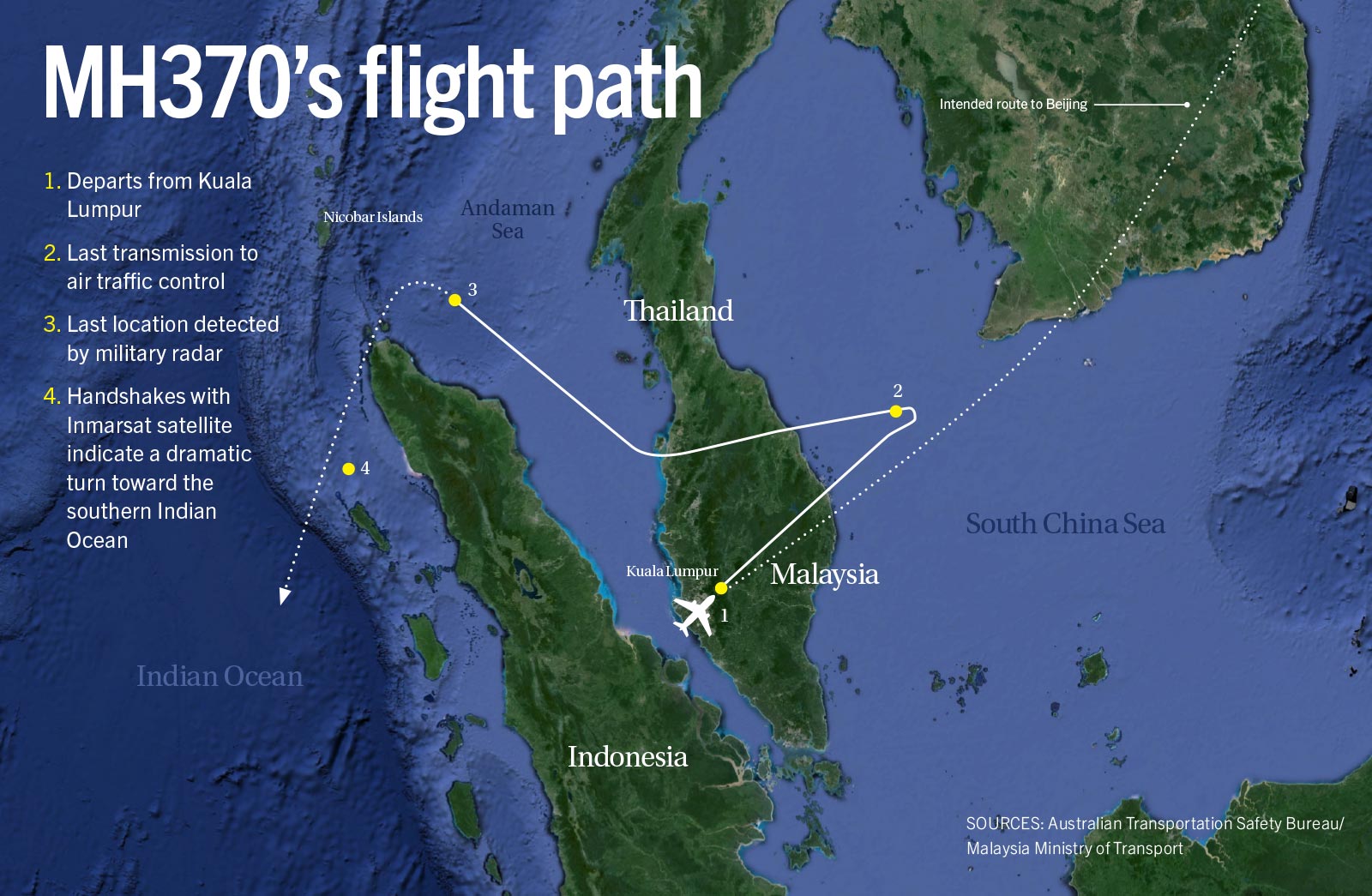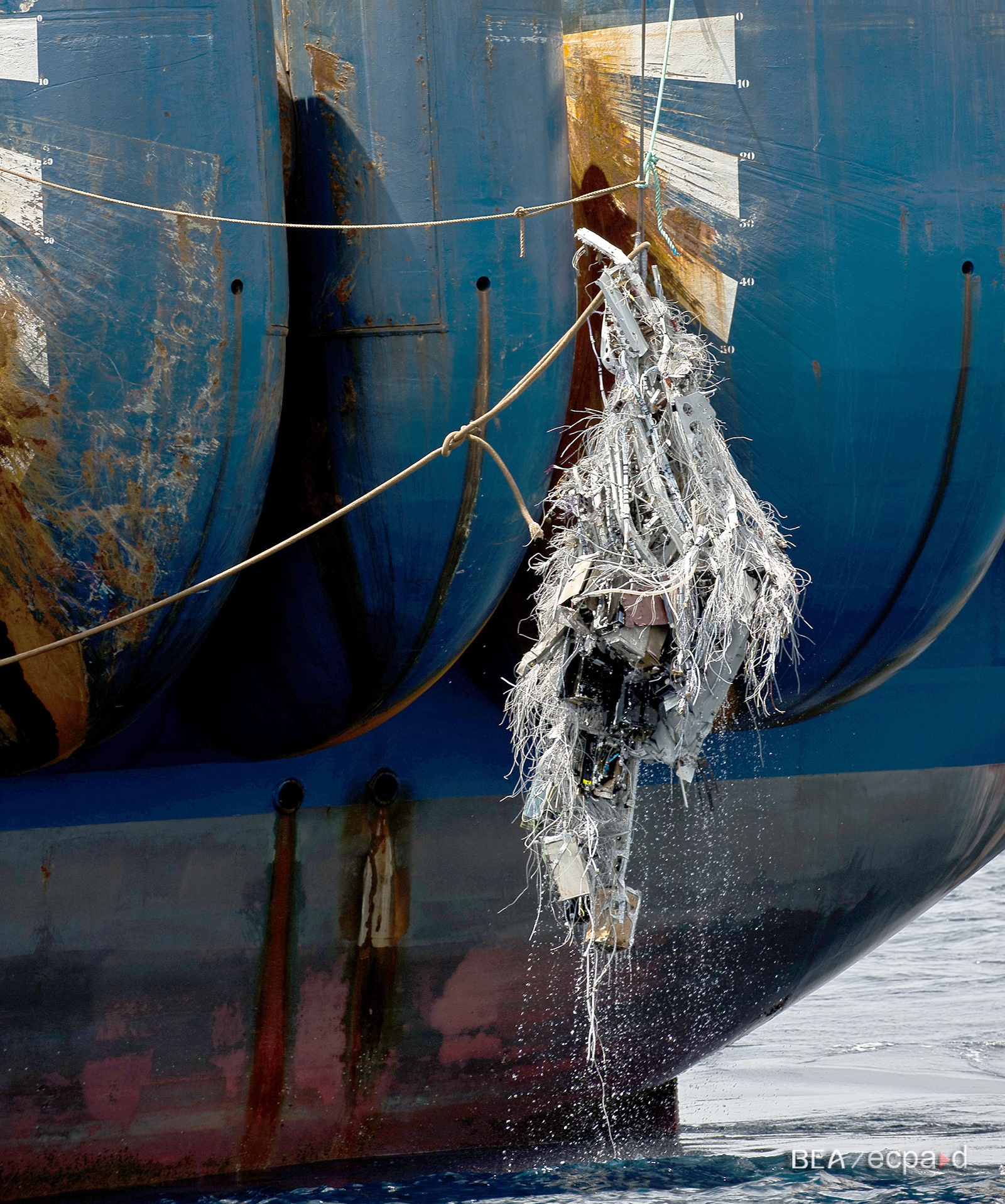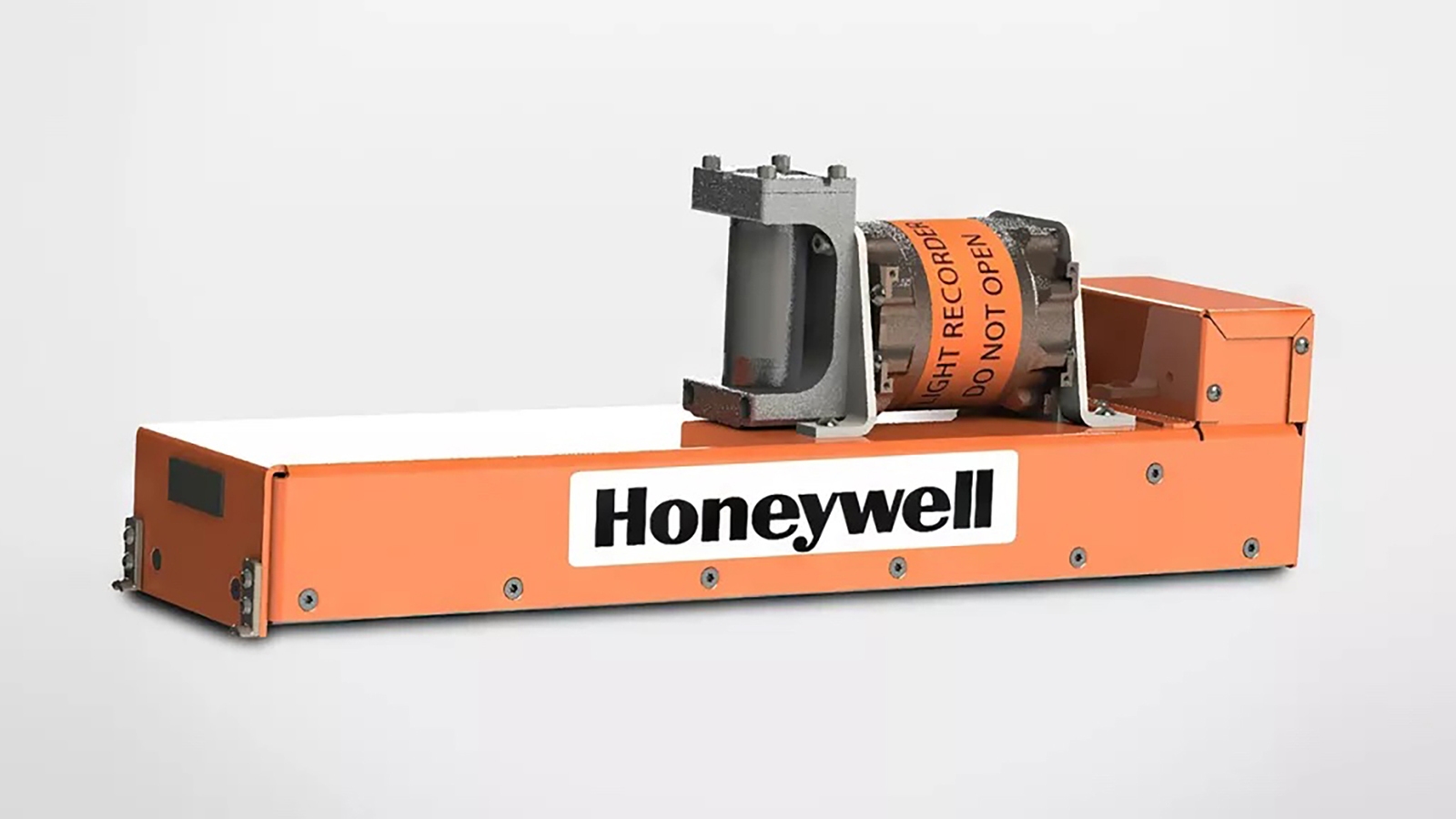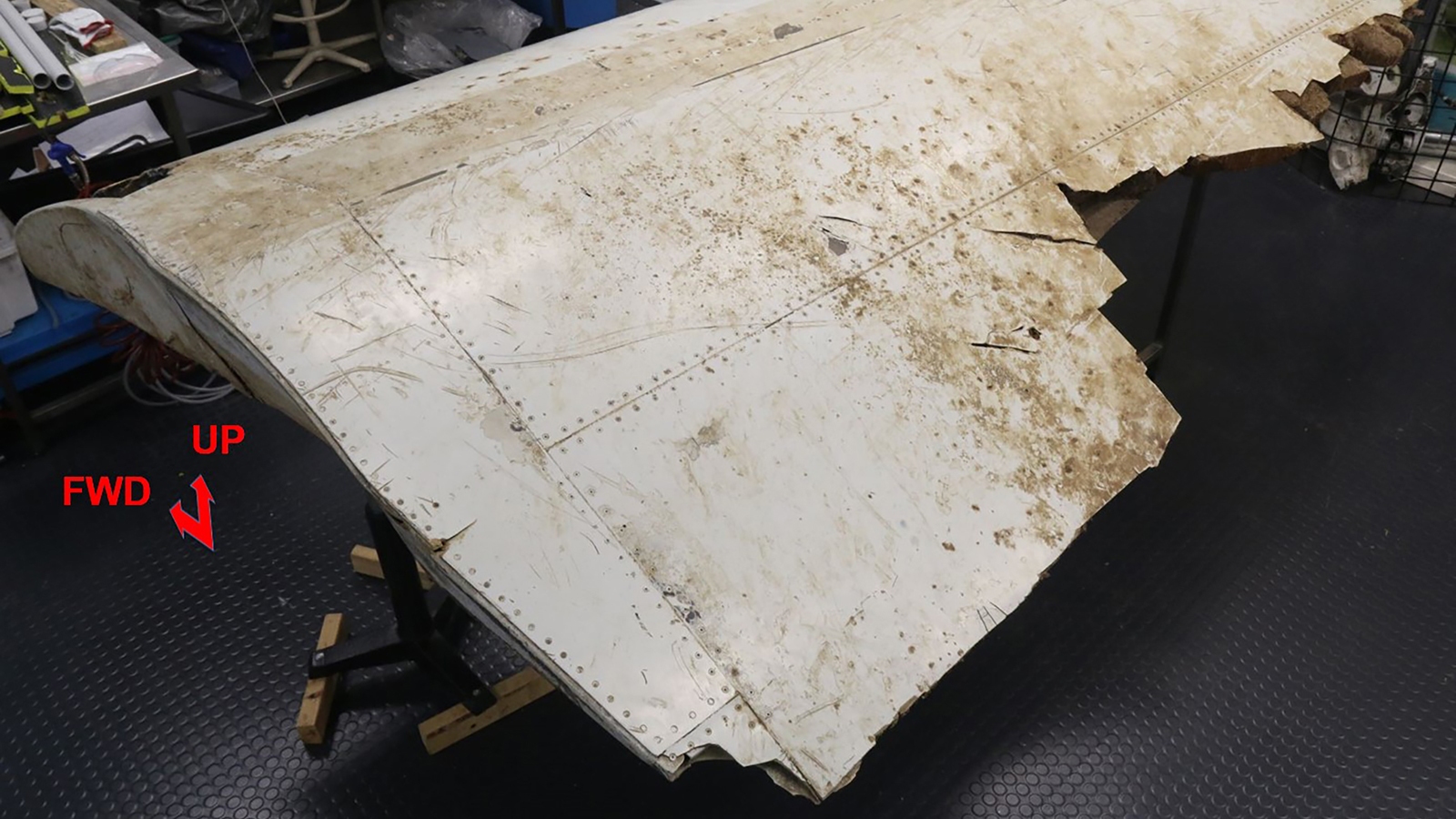Stay Up to Date
Submit your email address to receive the latest industry and Aerospace America news.
A decade ago this month, a Malaysia Airlines jet took off into the night with 239 aboard, and neither the plane nor those on it were ever seen again. MH370 remains the greatest mystery in the history of civil air transportation. Could a modern jet vanish today without explanation? Keith Button investigates.
A sign-off came into Kuala Lumpur air traffic controllers from a Boeing 777 that had taken off a half hour earlier, bound for Beijing: “Good night, Malaysian Three Seven Zero.” Controllers in Vietnam were supposed to hear from the crew next, but that radio call never came.
Malaysia Airlines Flight 370 and its 239 passengers and crew were gone.
What came next was a fruitless 33-month search that remains the largest and most expensive in aviation history, exceeding $44 million in its first month alone, according to a Reuters estimate. What happened aboard the plane? Now, 10 years after MH370 disappeared, the only clues have been thinly sourced suspicions about actions of the pilot in the weeks before the flight and a dozen or so pieces of debris that washed up on shores in the years after the jet vanished.
Could an airliner suffer the same fate today, flying off into the darkness never to be seen again, with the cause becoming a global mystery? To find out, I examined investigative reports and analyses produced by agencies in Australia and Malaysia, plus media reports, an influential industry safety study and safety standard recommendations from various agencies. I also interviewed five industry safety technologists, a professor who specializes in crash investigations and a seasoned accident investigator.

A clue as to what might have happened aboard MH370 came about two minutes after the “good night” call: The plane’s symbol disappeared from controller screens in Kuala Lumpur, Thailand and Vietnam. That meant the aircraft’s Automatic Dependent Surveillance-Broadcast (ADS-B) transponder, that had been sending the GPS location and heading, was no longer doing so — either because a rogue pilot turned a knob in the cockpit or because of a loss of power or damage to the device.
In 2014, ADS-B radio signals could be picked up only by ground stations when the plane was in range, and MH370 was well within that range when its symbol disappeared. Today, the Virginia-based Aireon service tracks aircraft globally by collecting ADS-B transmissions with Iridium satellites. Other providers offer regional tracking services. All told, an airliner flying an unplanned route over the Indian Ocean today could be tracked via ADS-B, provided its transponder was still transmitting.
Also, starting next year, newly constructed Airbus planes and new planes flown by European airlines will have a backup to ADS-B that would be automatically triggered in an in-flight emergency. It will be an upgrade of today’s emergency locator transmitters, or ELTs, that are triggered only on impact so that a plane and any survivors can be found in a remote area. Now, a “distress tracking” capability will be added so that if a plane rolls or pitches at extreme angles, or drops quickly, it begins transmitting during the flight. Another trigger would be if the avionics that detect whether a plane is in distress stop operating, perhaps suggesting that a rogue pilot turned them off. This emergency locator transmitter with distress tracking, or ELT(DT), technology was a recommendation that predated the MH370 disappearance. A multinational working group had called for it following the 2009 crash of Air France 447 in the Atlantic Ocean that killed 228.
As MH370 flew into the night, hours went by with no word from the plane, and it became apparent that it must have crashed. But where? Military radar showed that it made a series of curious turns before vanishing from radar. Inmarsat, the London-based communications satellite operator, alerted Malaysian authorities of seven automated log-on attempts to establish links between the plane and a geosynchronous satellite over the Indian Ocean. Two of those attempts were initiated by the plane and five by an Inmarsat ground station in Australia. Timestamps for each attempt showed the send and receive times. From these signal transit times, the distance between the satellite and the plane at each attempt was deduced and represented as a series of circles on the globe with the satellite in the middle of each. Based in part on the aircraft’s likely speed and previous estimated location, each circle was narrowed to an arc of possible locations that in turn helped narrow the next circle to an arc, and so on. The final arc represented the points at which the plane likely crossed just before impact when it ran out of fuel. Based on that arc, the Australian Transport Safety Bureau defined an underwater search area in the southeast Indian Ocean.
The task was then to locate the wreckage and the black boxes, meaning the cockpit voice recorder and flight data recorder. The flight data recorder would be most helpful because it was equipped to record up to 25 hours of data, including the readings the crew would have seen on their instrument panel and the settings of the flight control surfaces. Given that MH370 flew for an estimated seven and a half hours, there would be a record of the entire flight. The cockpit voice recorder, on the other hand, could well have proved to be useless given that it would have recorded only the final two hours of the flight, meaning any conversation early in the flight when the plane made the curious maneuver and the ADS-B stopped transmitting would have been overwritten.

Today, a solution for the voice recorder time limitation is being rolled out. The European Union Aviation Safety Agency in 2021 required all new large passenger planes to be equipped with voice recorders capable of collecting 25 hours of sound. FAA in December proposed to follow suit for new aircraft but resisted calls from the National Transportation Safety Board to extend the rule to existing aircraft, citing a need for “the lowest economic impact on operators.” FAA estimates that retrofitting would cost $25,000 per plane. NTSB last month said the two-hour limit had “hampered” its investigation of two near collisions at U.S. airports in 2023 and other runway “incursions.” It also cited the case of the door plug that was blown off a Boeing 737 MAX 9 in early January. NTSB first broached the extension in 2018, citing a long list of investigations it says were hampered.
Even with the limitation of the voice recorder, investigators in 2014 were determined to find the boxes. Doing so required dragging hydrophones to listen for the acoustic pings from the underwater locator beacon on each box, a device that doubles as a handle on the exterior of each. Malaysian investigators enlisted ships, helicopters, underwater drones and fixed-wing planes from a dozen nations including Australia, China, the United Kingdom (which also contributed a nuclear-powered submarine) and the United States. Some of the vessels searched for the black boxes, and others looked for bodies or floating wreckage. By the time the search was called off in early 2017, some 710,000 square kilometers of the floor of the Indian Ocean — an area a little larger than Texas — had been scoured. A smaller privately funded search followed in 2018. Neither the black boxes nor any bodies were found. Three small pieces from MH370’s wings and other debris linked to the plane were discovered in 2015 and 2016 when they washed up on shores along Africa’s east coast, Madagascar and nearby islands.
Today, if ADS-B wasn’t operating and a plane went missing, the search area might be similar to the one in 2014. But there is one piece of technology on today’s aircraft that would make zeroing in on underwater wreckage much less difficult, says Philippe Plantin de Hugues, head of European and international affairs at BEA, the French aviation accident investigation authority.
Since 2018, any large passenger plane flying over the ocean has carried an additional acoustic beacon. Located in the nose of Boeing aircraft and in the rear of Airbus planes, the new beacons would be triggered when submerged. Each is a watertight metal cylinder about the size of a soda can containing a single-cell battery and electronics to emit a ping every second for 90 days. On MH370 and other aircraft of that era, the only beacons were those on the black boxes, and they had only enough battery power to transmit for 30 days. The additional beacons are designed to transmit at a low frequency of 8.8 kilohertz, giving them a detection range of 5-10 kilometers, compared to the 3-km-range of the 37.5-kHz black box beacons that were aboard MH370, Plantin de Hugues says. But he notes a caveat for Boeing aircraft: The location of the beacons in the nose means they could be damaged or destroyed in the nose-first impacts that he says have historically accounted for 60% of Boeing crashes.
Plantin de Hugues led the multinational working group that made recommendations for new equipment following the Air France crash, including the additional beacons and the coming distress tracking capability.
But what if, despite all the new technology, the boxes still can’t be found?
In the wake of Air France crash, the Plantin de Hugues working group saw a need to end the near total reliance on recovery of physical black boxes. The Air France boxes were eventually recovered in 2011, nearly two years after the crash, but when the working group met, the search was still on. The group recommended to the U.N.’s International Civil Aviation Organization that it create a standard that large passenger planes should carry technology to provide cockpit audio and flight data to investigators immediately after a crash.
A decade later, EASA enacted a rule based on ICAO’s standard, requiring newly designed large passenger airliners to be equipped at least one of two ways: With cockpit voice and flight data recorders that transmit data to the ground via satellite or with boxes that would be ejected from the plane’s tail on impact. These deployable recorders would need to float, too, in the case of a water crash. Plantin de Hugues expects that it will take until 2025 or 2026 for aircraft to fly with one of the new technologies.

So far, adoption of the tech has been uneven. Airbus chose to install ejectable black boxes on its new designs. In the U.S., FAA hasn’t adopted any rules based on the ICAO standard. Boeing, in response to written questions, did not disclose whether it has any plans to install or study ejectable or transmitting black boxes.
Because ejectable black boxes are designed to be recessed, or flush with the surface of the plane, airlines have deemed them too expensive to be a retrofit option because that would require altering the airframe.
So what about streaming? It would be fairly simple to install technology to allow transmission of black box data and audio, says Chris Thomson, a U.K.-based vice president at Curtiss-Wright Corp., the North Carolina-based maker of cockpit voice and flight data recorders. Five years after MH370, Curtiss-Wright and Honeywell agreed to jointly offer a “black box in the sky,” a combination recorder that could stream flight data and the cockpit audio in real time via satellite. Adding hardware for the streaming feature would be easy, Thompson says: Just add a card to a slot in the black box, like adding a memory card to a laptop computer.
The demand would need to come from the airlines. “If an airline were to feel passionate about it, they would make an overture to the aircraft manufacturer, who would then decide whether they wanted to make that offerable or not,” he says. The manufacturers responsible for most of the world’s airliners — Airbus, Boeing, Bombardier and Embraer — often make new options available at cost for a particular customer, or they add new standard options if customer demand is widespread.
A decision would also need to be made about precisely which data and audio to transmit. An EASA-funded analysis released in June concluded that it would be too expensive to continuously transmit flight data recorder information and cockpit audio for the entirety of every flight, unless the plane’s operator could also utilize the information for business purposes beyond crash investigations. Another option would be to transmit the audio and data in a triggered, sudden burst just before a crash. This would cost less but would come with the risk that not all the information would be received in the event of a sudden impact, for instance. Also, actions or developments early in a flight might cause a crash later, but it could be difficult to predetermine which factors should trigger a transmission, according to the study, conducted by Collins Aerospace, the North Carolina avionics maker.
In the case of MH370, audio could have supported or debunked a theory that today has thin evidence: that the plane’s captain carried out a suicide-murder plot. The captain, Zaharie Ahmad Shah, flew a flight path similar to the final route of MH370 out over the Indian Ocean on his home flight simulator in Malaysia, just weeks before MH370, according to a 2016 New York magazine story that cited a confidential document from a Malaysian police investigation. Early flight data or audio could also explain why the plane “was not configured for a ditching,” a conclusion of the Malaysia Ministry of Transport based on a piece of wing debris that was positioned for cruise. This implied that the captain and co-pilot had to be either unconscious or they deliberately allowed the plane to crash.
Setting aside sabotage, perhaps a gradual cabin depressurization had clouded the crew’s judgment or they tried to descend to below 10,000 feet where pressurization is not needed but fell unconscious before they could complete the maneuver, leaving the plane to keep flying until it ran out of fuel.

Ultimately, the Collins study said, the streaming black box concept could be implemented in two to five years if a hybrid approach were employed. Information would be continually streamed during takeoffs and landings, when crashes are most likely to occur, but during cruise, streaming would only be triggered only in an emergency.
Given that by next year it will have taken 16 years to get distress tracking onto new aircraft and nine years to get additional beacons on new aircraft, a wait of two to five years could be considered an improvement.
The long timelines have been a source of frustration for advocates, including Anthony Brickhouse, a professor at Embry-Riddle Aeronautical University in Florida who teaches crash investigation courses.
“From my perspective as a safety professional, if you’ve lost one [aircraft], it’s one too many. The technology is out there for us to have good data to use to do our investigations,” he says.
About Keith Button
Keith has written for C4ISR Journal and Hedge Fund Alert, where he broke news of the 2007 Bear Stearns hedge fund blowup that kicked off the global credit crisis. He is based in New York.
Related Posts
Stay Up to Date
Submit your email address to receive the latest industry and Aerospace America news.




